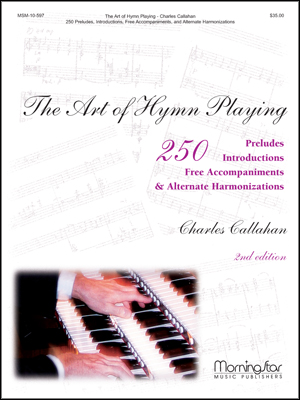- |
User Links
Holy God, We Praise Your Name
Hymn Information
- First Line
- Holy God, we praise your name
- Versifier
- Ignaz Franz (1774 ca.)
- Translator
- Clarence A. Walworth (1853, alt.)
- Text Source
- <cite>Te Deum</cite>, 4th c.
- Tune Name
- GROSSER GOTT
- Composer (descant)
- Emily R. Brink (1986)
- Tune Source
- <cite>Katholisches Gesangbuch</cite>, Vienna, 1774
- Topic
- Church Year: Trinity Sunday · Communion of the Saints · Doxologies · God's: Holiness · God's: Mystery · God's: Name · God's: Reign · Music and Singing · Praise of God · Trinity · Elements of Worship: Praise and Adoration
Copyright Information
- Text Copyright
- Public Domain
- Tune Copyright
- Descant © 1987 Faith Alive Christian Resources
- Reprint/Projection Information
- Words: The Words are in the Public Domain; you do not need permission to project or reprint the Words.
- Music: The descant only is copyrighted, and projection or reprints are permitted with a license from CCLI.com or from OneLicense.net. If you do not own one of these licenses, please contact the copyright holder for permission.
Full Text
Scripture References
Further Reflections on Scripture References
The Psalter Hymnal includes Walworth's stanzas 1-4, which cover only the first half of the "Te Deum." We and all creation praise our God and Lord (st. 1); all the angels sing their praise to God (st. 2); saints in heaven and the church on earth praise God (st. 3); we praise the triune God (st. 4). The two halves of this part of the "Te Deum" are carefully balanced: stanza 2 ends with the angels' threefold Sanctus; stanza 4 concludes with a Gloria Patri.
Bert Polman, Psalter Hymnal Handbook
Confessions and Statements of Faith References
Further Reflections on Confessions and Statements of Faith References
What we know as the attributes of God reveal his character and being. For these, he is worthy of praise and adoration. Even before he says or does anything, he is praise-worthy. The opening words of Belgic Confession, Article 1 declare that God is “eternal, incomprehensible, invisible, unchangeable, infinite, almighty; completely wise, just, and good, and the overflowing source of all good.”
The Lord’s Prayer ends with a doxology, and Heidelberg Catechism, Lord’s Day 52, Question and Answer 128 extrapolates: “Your holy name…should receive all the praise, forever.” After expressing our trust in the total care of God for all things, Heidelberg Catechism, Lord’s Day 9, Question and Answer 26 declares, “God is able to do this because he is Almighty God and desires to do this because he is a faithful Father.” And so we express our praise and adoration to God for who he is.
Holy God, We Praise Your Name
Call to Worship
Words of Praise
Additional Prayers
Holy God, We Praise Your Name
Tune Information
- Name
- GROSSER GOTT
- Key
- F Major
- Meter
- 7.8.7.8.7.7
Recordings
Musical Suggestion
- Donald Busarow's arrangement for choir, congregation, brass quartet and organ is in the key of G, which I favor for its brighter quality. It begins in unison and alternates choir and congregation, ending with a powerful final stanza with descant and fortissimo instruments. The only potential drawback is a very long instrumental introduction and other interludes that demand congregational cues (CPH 98-2530).
- Roy Ringwald's setting can be adapted for use with the congregation but is really more effective as an anthem. It features alternating male and female verses. Some might think it too elaborate for this unsophisticated tune (Flammer A-5930).
- Unique to all concertatos is the combination of the original Gregorian melody of the Te Deum with the hymn tune found in the arrangement by John Ferguson (GIA Publications, Inc., #G-3167). The chant is sung very quietly in Latin by the trebles while the men sing the melody of "Holy God, We Praise Your Name." This effectively links the past with the present. Most likely the opening would have to be sung from the rear of the sanctuary before the processional begins. After the four verses are completed the choir closes with a coda, sung quietly and fading out with the phrase, "Through the church the song goes on."
Holy God, We Praise Your Name
Hymn Story/Background
Author Information
Composer Information
In 1977 she was appointed to the Psalter Hymnal Revision Committee, and in 1983 moved to Grand Rapids in a change of careers to become the first music and worship editor of the Christian Reformed Church. She was the founding editor of Reformed Worship; editor of the Psalter Hymnal (1987), Songs for LiFE (1994), Sing! A New Creation (2001, 2002); co-editor with Bert Polman of The Psalter Hymnal Handbook (1998), and editor of many other worship-related publications. Since 1984 she has been an adjunct professor at Calvin Theological Seminary, directing the seminary choir in the first years, and introducing courses on church music and worship before being granted emeritus status in 2009.
Her ecumenical work began with the Hymn Society in the United States and Canada, becoming the first woman president (1990-1992); in 2006 she was named a Fellow of the society in recognition of distinguished services to hymnody and hymnology. She served in both local and national offices of the American Guild of Organists, and has been a member for more than twenty years of the Consultation on Common Texts, serving as chair from 2008 to 2014.
In 2002, she became a Senior Research Fellow at the Calvin Institute of Christian Worship, contributing to The Worship Sourcebook and other publications; serving as program chair of the annual Symposium on Worship; and helping to plan and participate in worship conferences in more than fifteen countries.


 My Starred Hymns
My Starred Hymns





